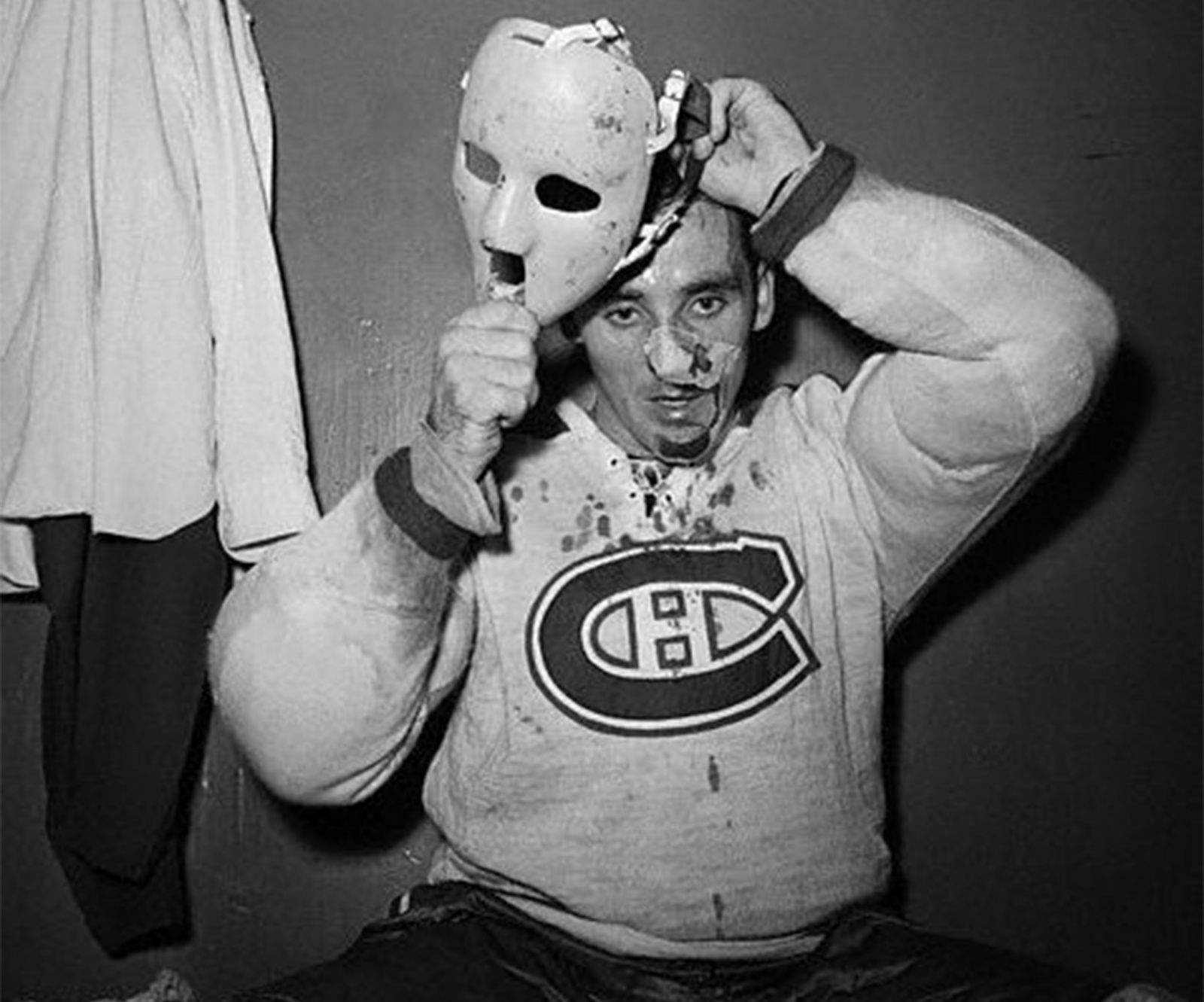In hockey’s early days, if you took a puck to the kisser you got stitched up and put back on the ice. No goalie would dare wear a protective mask — fans considered it unmanly. Coaches worried their netminders would lose their courage. Reporters echoed these judgments in their stories.
 But after stopping a hard wrist shot with his face early in the first period of a game against the Rangers in 1959, Montreal Canadiens goalie Jacques Plante refused to return without the crude, flesh-toned fiberglass mask he used in practice.
But after stopping a hard wrist shot with his face early in the first period of a game against the Rangers in 1959, Montreal Canadiens goalie Jacques Plante refused to return without the crude, flesh-toned fiberglass mask he used in practice.
The press fussed at him, but Plante believed playing without a mask was like a skydiver jumping without a parachute. Plante’s ghoulish face cover went on to win over goalies, became an enduring symbol of the game and even evolved into a high-tech artistic statement for today’s goaltenders.
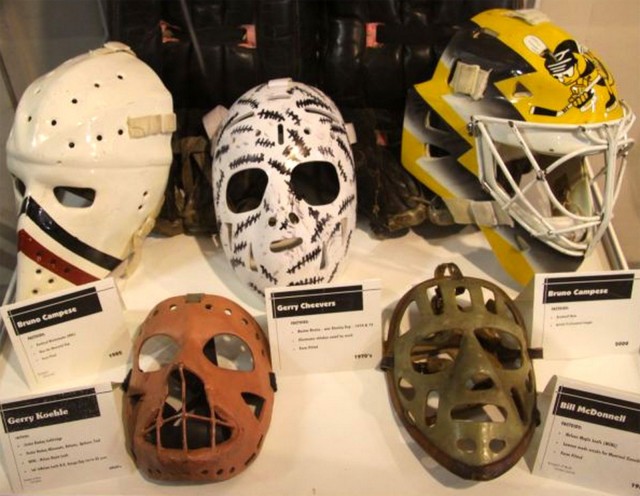
Photo: Hockey Hall of Fame
“I already had four broken noses, a broken jaw, two broken cheekbones, and almost 200 stitches in my head. I didn’t care how the mask looked,” Plante said about wearing protection on the ice. “I was afraid I would look just like the mask, the way things were going.”
Today’s goalie wears what is referred to as a combo mask, a wrap-around fiberglass-Kevlar mix that covers past the ears, goes over the top of the head and dips down to cover the throat. A stainless steel cage protects the area of the eyes and nose.
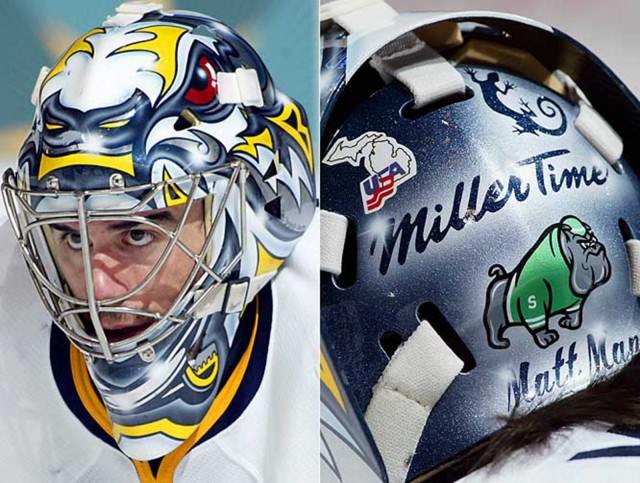
Photo: Sports.ru
When Plante, his jersey spotted with blood, re-entered that game in 1959, the sport of hockey was undergoing changes that necessitated a shift in attitude about protecting the face.
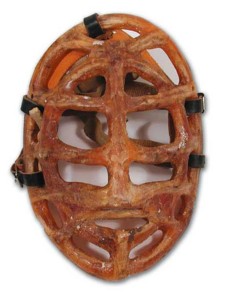
Photo: Classic Auctions
The slapshot was born, with pucks traveling at 100 mph. Before then, a slower game kept the puck on the ice and a stand-up goalie would block most shots with his stick and come out of the net to cut down angles.
Goalies soon began flopping down more on the ice in a style now known as the butterfly, spreading their body to cover more space in front of the net — and ultimately making the face more vulnerable. As the position evolved, goaltenders became convinced a mask was essential and mask makers constantly fine-tuned designs and materials.
Plante himself became a partner in a fiberglass company and the evolution of the mask could be seen on his face until his retirement in the 1970s at age 46.
The early models were ugly as designers worked to improve ventilation and allay concerns about obscured peripheral vision. Plante and others briefly wore what is referred to as the pretzel, a mask designed with brown, ropelike shapes of fiberglass that kind of looks like the big soft pretzels you can buy at the mall.
Over the years, masks were made to cover the face and were painted white.
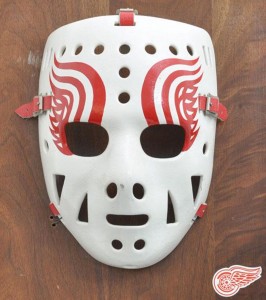
Photo: HockeyGods
“When he started putting the stitches on, people took note it wasn’t just to protect your face,” former NHL goaltender and mask collector Ron Hextal told NHL.com. “It was a piece of art.”
A trainer with the Red Wings in the 1970s added some red, feathery wings coming off the eye holes of Jimmy Rutherford’s mask. That seemed to ignite a custom in personalizing masks with painted scenes to reflect team colors and logos, while revealing the individual identities of goalies, who are generally considered the quirkiest members of teams.
Fans hold classic masks dear to their hearts: Some of the designs became more legendary than the players behind them. Scores of websites, YouTube videos and even companies making replica masks are devoted to pioneering designs and paint jobs to satisfy fans fascinated by mask history. (See below for sample of videos that elaborate on history and design.)
Painting the mask became more challenging when, in an effort to protect the still-exposed eyes of the old masks, the combo mask began to appear (the name comes from two styles, the fiberglass and the cage worn on helmets by some goalies, especially in Europe). But surface area that got lost from the front shifted to other areas of the head. Now the artists themselves have rock-star followings that sometimes eclipse their clients.
https://youtu.be/N9lUgKsfKds
